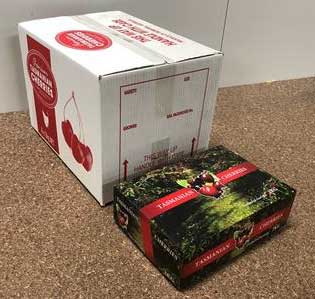With several advantages over international competitors, many improvements to existing systems can be made to develop this emphasis on presenting the best cherries on the market.
Recommendations (cont from last issue)
In all likelihood these premium sales opportunities, including the lucrative Lunar New Year gift market, represent the best chance for Tasmanian cherry producers to remain financially viable. Key recommendations from this report are:
• Cherries must be introduced to the cold chain as soon as possible. Design of harvest systems should place emphasis on reducing the time between picking and hydrocooling with inefficiency in this area causing irreversible reduction of shelf life.
• Reduce pitting by slowing cluster cutter belt speeds, reducing hydrocooler shower height and reducing fruit drops to as low as possible. Packhouses should place larger emphasis on monitoring packing lines and making alterations to minimise all fruit impacts. Water flumes provide a better option to transport fruit than solid belts.
• Ensure post-harvest fungicide dips take place to reduce occurrence of rot, especially when used in conjunction with modified atmosphere packaging. Packers must be aware of maximum residue levels of importing countries and make decisions accordingly.
• Encourage modification of box and outer designs to include vents to make FA cooling feasible. This process represents the greatest opportunity to lower fruit pulp temperature and improve shelf life and is used commonly in all major global cherry production areas. With current air freight capacity, improving cherry shelf life through FA cooling may not necessarily improve returns directly, although the greatest benefit would be the ability to hold fruit and allow marketers to better target time periods of greater demand.
• Limit investment for domestic consumption growth to large-scale producers. Increasing domestic consumption would likely not be without significant commitment and servicing this market would not be feasible for all packers due to insufficient scale to invest in punnetising or bagging technologies.






















